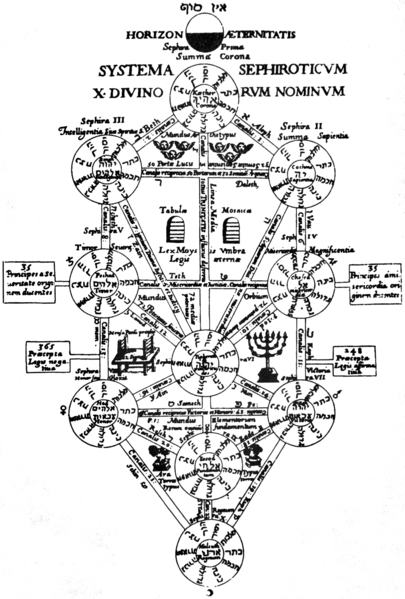The esoteric tree
The tree is also a esoteric symbol. In biology, the yew is a species of tree which is still capable of making photosynthesis in the winter down to -8 ° C. Among the egyptians, the Sykomore was considered a tree of life. In China the peach tree is considered a tree of immortality.
The Celtic druids referred to the oak. The name Druid can be translated as 'oak' (drys, oak: Plinius the Elder), from which the druids brought the mistletoe.
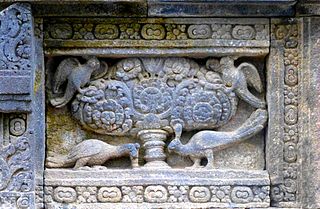
Kalpataru tree, other representations are with geese, lions, monkeys and kinnaras, the latter possibly accompanied by Apsaras.
Hinduism
The Kalpavriksh(Skt. parijata: born in heaven; kalpavriksha, kalpataru, kalpadruma, kalpapādapa; tib. dpag-bsam-gyi-shing) is considered in Hinduism as wish-granting tree. Its origin is in the Samudra manthan together with the cow Kamadhenu.
Indra took the tree to his paradise, where he grew on the summit of Meru in the middle garden of five garden. The tree is said to have golden roots, a silver trunk, branches of lapis lazuli, pearl-like flowers, and diamond-shaped fruits. [Beer]
The Asuras fought with the gods because they were allowed to live only in the lower part of the tree while the gods used the fruits of the tree. The demon Andhaka tried to steal the tree Parijata from Indra's sky, but he was copped by Shiva.
The birth of Shiva's daughter Ashokasundari is attributed to the Kalpavriksha tree. The daughter Aranyani, a vedic goddess of forests and wild animals, was rewarded for the protection of Kalpavriksha.
In the Todala Tantra (Patala 2) Shiva teaches the Shakti about yoga and describes the body as similar to a tree.
Sri Krishna says in the Bhagavad Gita (10.26): Of the trees I am the Banyan tree.
The Audumbara tree is the grown from the earth tree of life (of the chakras).
The Jnana Karika says: 'The tree is the human body, the root of the tree is thus the central point of the upper and lower currents, each branching into other nadis or lines of vitality.'
The Tara Tantra describes the royal mantra 'Om Hrim Trim Hum Phat' as the higher divine tree.
The Rudra-Hridaya Upanishad says: 'This whole creation of Svarga, Martya and Patala Lokas is a big tree. Vishnu is the upper part of this tree. Brahma is the tribe. The root of the tree is Rudra. Uma is a creeper. '
Buddhism
The Bodhibaum, under which Buddha found his enlightenment, is seen in Buddhism as a symbol of spiritual awakening.
In the relief at the Stupa of Amaravati, the tree is a symbol of the whole cosmos.
A small wish-filling tree adorns the upper part of the long-life vase, held by long-life deities such as Amitabha and Ushnishavijaya. The goddess Shramana holds a jewel of the Kalpavriksha in the left. [Beer]
Egypt
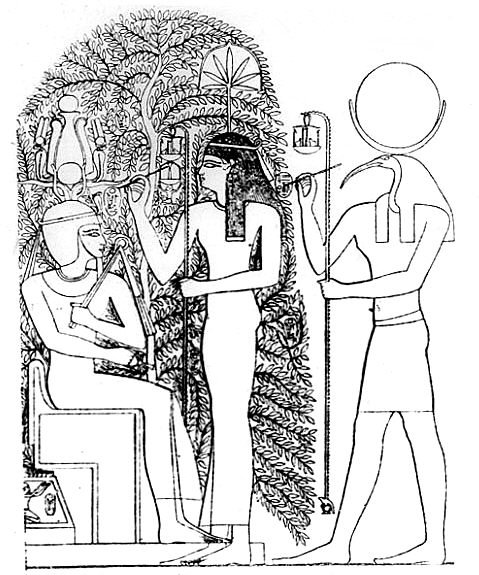 The holy tree of Heliopolis with Thot and Seschet .
The holy tree of Heliopolis with Thot and Seschet .
Bibel
Genesis reports in chapter 1.11-12 how God created the trees and the fruit-bearing trees of the world....
God places Adam and Eve into paradise and forbids them to eat from the tree in the middle of the garden.
Abraham planted a tamarisk to Be'er Sheva.
Kabbala
The kabbalist tree of life (Etz Chaim) contains the 10 Sephiroth. The backsite (sitra achra) of the tree of life forms the tree of death with the Qlīpōt(shells). 'Adam Kadmon' is the selfrealisation of this tree.
New Testament
The New Testament mentiones the cedars of Lebanon.
Christianity understood itself as a higher doctrine of the tree of life.
John's revelation says at the very beginning: 'But whosoever shall add or take away from the book, God will inflict plague on him, and take away his part in the tree of life.' -- In chapter 22: 2 it is said, "And he showed me a stream of living water, clear as crystal, going forth from the throne of God and the Lamb; In the midst of the plaza, and on both sides of the stream, trees of life, which bear twelve times fruit, every month they bring forth their fruit, and the leaves of the trees serve the healing of the peoples".
But this tree is far above the creator god and very much higher than the other trees.
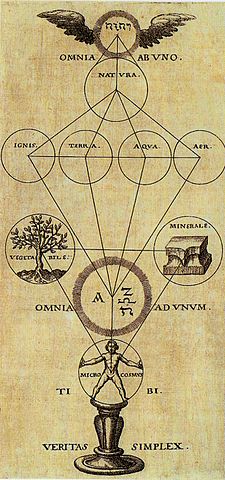
Greece
In Thrace the word Dionysos consists of dios ("divine") and nysos ("tree").
In the Herakles myth, the Hesperides nymphs and the dragon Hesperidos (Ladon) guard the tree with the golden apples.
Εὐρυδίκη ('the widely talking') is a thracian dryade (tree nymph).
Sumerians
Inanna and the Ḫuluppu tree is a Sumerian myth from the 3rd millennium BC.
nanna was at first not yet in possession of power attributes and was therefore bound by the instructions of An and Enlil. As she traveled aimlessly through the country, she discovered, on the bank of the Euphrates, a single mysterious tree, disrupted by the south wind. She crossed with the tree over the Euprat and transplanted it to her holy garden in Uruk, and the tree developed magnificently in the first ten years.
The bird Anzu (mighty / strong cloud, sum: Imdugud) put its nest in the upper branches of the tree, which reached to the sky. Anzu / Imdugud is also presented as a lion eagle with spread wings, which stands on two deer or lions.
A snake, which could not be expelled, built its nest in the earth in the roots of the tree. The goddess Lilith (air and darkness, Sumerian DINGIRLIL.du and DINGIRSUKUD.du as God of the wind in great height) made tree trunk to her new seat.
Inanna was worried because Lilith was equipped with the powers of the air and of the underworld gods. After a while she begged the inhabitants to leave her holy tree, as she intended to get out of the wood her throne and her bed, but those refused.
Since Inanna had no strength to expel them, she called her brother Utu. Her mighty brother, the sun god Utu, made his daily way around the earth in the dawn of dawn.
Inanna spoke to him desperately, and Utu entered the garden and slew the serpent and drove the Anzu into the mountains, and also the Lilith, who had previously destroyed their abode.
The story is also esoteric: The tree is up to step 6 of the universal path exposed to the winds. At the beginning of step 7 the crossing to the first small other bank (comparable with the flood of Noah) takes place. Through the pranayama of step 8 the tree can thrive and is slowly inhabited. At step 9 the kundalini snake enters. At step 10 the tree grows tall. Lilith symbolizes forces of the wheel of life.
At 10.4 (planetary phase: sun) Inanna can take up on the wood place - s.a. Tarotcard 10, as her power is now higher.)
In another version of the myth, Utu refused, and Gilgamesh helped Inanna: 'Then Gilgamesh uprooted the Huluppu tree. From the trunk of the tree he carved a throne and a bed for his holy sister. But the throne and the bed were of dead wood, and they could not shine. "[3] (The tree was the tree of the so-called magical man and not yet the tree of step 4.)
As the sacred tree of Eridu the life or world tree is described in the cosmogonic concept of Mesopotamia.Alchemy
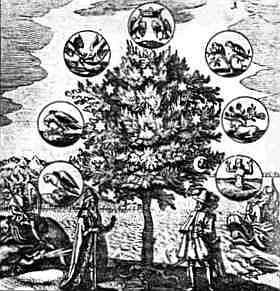
In spiritual alchemy (philosophia reformata) the tree of
life stands on the (first) other shore(U. Path 14).
China
A special kind of Qigong is the 'Tree Qigong' (Ding Shu Gong).
Nordic mysteries
Nidhöggr (Nidhöggur, the hateful beating) is a serpent-like dragon in Nordic mythology, who lives at the world tree Yggdrasil. He damages the tree at the bottom of the trunk and the roots, and accepts the words which the squirrel Ratatosk brings from the eagle in the crown of the tree.
The Prosa-Edda adds that Nidhöggr, along with many snakes in the Hvergelmir spring, which is located in Niflheim under the third root of the world tree, sits at the root of Yggdrasil, here symbolizing the human soul.
- R. Beer : The Handbook of Tibetan Buddhist Symbols, S. 193
Weblinks
- Wiki about the Tree of knowledge
- Wiki über Inanna und den Ḫuluppu-Baum(de)
- [3] The Anzu-bird
of Spirituality
universal-path.org
